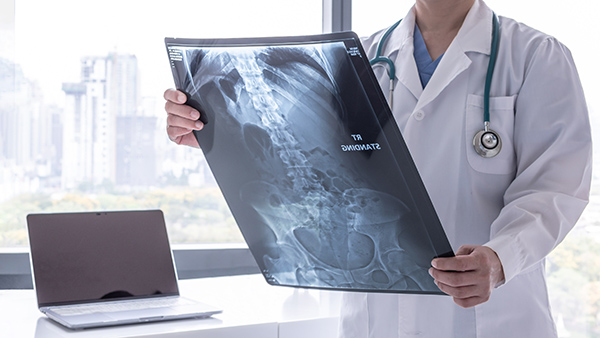Most patients know what to expect when they go to the dentist, the doctor or the hospital and need an X-ray. As part of the process, a heavy apron or other type of lead shield is placed over the top of vital organs to protect them from radiation.
Thanks to new recommendations and scientific evidence, that long-held practice is starting to change. In mid-February, the St. Charles Radiology teams will no longer shield patients undergoing diagnostic radiology exams.
“We’ve had all of this discussion coming from different physicists and imaging organizations in recent years saying that shielding is ineffective and actually may cause more harm,” said Rob Kennard, director of Radiology for St. Charles Health System. “Just recently, the state of Oregon said, ‘We are not going to require shielding anymore.’”
In early January, the Oregon Health Authority announced the reversal of an Oregon Administrative Rule that previously required gonadal shielding for patients going through diagnostic radiology tests. The reason – after years of research scientists now believe the shield can interfere with the image quality results, which can lead to a need for a second image resulting in more radiation exposure, time and expense for patients.
The Oregon Health Authority made its decision based on recommendations from other organizations including the American Association of Physicists in Medicine and the Image Gently Alliance – which is focused on safe imaging practices for children.
“The practice of shielding was never based on scientific evidence,” said Michael Timmerman, radiation safety officer for St. Charles Health System. “The belief was that if we irradiated patients’ gonads it could cause damage to their future children. But in reality, there has been no evidence of that in any scientific studies.”
Michael Timmerman explained that any X-ray exam results in some scatter of radiation throughout the inside of the body to other organs – but that the external shield doesn’t do anything to prevent that scatter dose. Instead of shielding, radiology professionals are working hard to reduce patients’ lifetime exposure to radiation in a variety of ways including improvements in technology and the sharing of test results through electronic medical records systems to ensure patients don’t have unnecessary repeat exams.
“The industry standard and trend is for the radiation dose to continue decreasing,” Kennard said. “We may be getting rid of this process, but we continue to invest in equipment and technology that are helping to reduce radiation exposure. We are doing a lot that is having a positive effect.”





